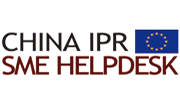11 November, 2016
Enforcing your IP rights in case of an infringement is one of the key factors of business success in China as the reputation of being litigious eventually discourages counterfeiters from infringing on your products. In today’s blog post we will take a look at how one French garment company dealt with IP infringements and what did the company learn from its experience.
Creative industry goods are valuable not only for their designs but often their trade marks too, and businesses should be aware that intellectual property rights (IPR) infringement can target either or both of these types of intangible assets. However, in actual cases of infringement enforcement processes are not always straightforward, and careful consideration and adaptation of strategies is necessary, as illustrated in this case study of a French garment designer.
Background
A French company “A” entered into a joint venture agreement with a Chinese company “B” in order to manufacture and export a seasonal garment collection to Europe. To minimise costs, the design of each individual piece of clothes was not been protected in China. However the trade mark appearing on the collar label was registered.
“A” was providing their new patterns to “B”, 3 to 4 months prior to the launch of their collection. “B” was then sub-contracting the manufacture of the garments to another factory of which “A” was not aware. The goods were then exported by “B” to “A”, who was receiving the goods for distribution in their stores. Additionally, “A” did not have any local representative in China to supervise and check production and quality.
After two or three collections were manufactured, the quality of the production started going down to the extent that “A” had to refuse entire shipments of goods. As the poor quality of the products was putting its business in jeopardy, “A” was forced to find an alternative way to manufacture the goods.
Finally, after exchanging correspondence and warning letters, “A” and “B” decided to terminate their contractual
relationship. In the meantime, “A” was informed by one of its local agent about products bearing identical or similar trade marks being sighted in shops located in South-East China. Immediately, “A” thought that “B” might be involved in this business. Yet it did not have any evidence of it, since “B” was sub-contracting the manufacture of the goods to another factory that “A” was not aware of.
Strategy and Actions
“A” decided to take action and hired a private investigator in order to try to locate the factory where these garments were produced. It proved quite easy to locate the counterfeiter since most stores selling the fake products were owned by the owner of the manufacturing plant. An informant was placed inside the factory to monitor its activities.
“A” rapidly found out that since they were not providing any new designs to “B”, the identified factory was not producing identical garments anymore.
At the right time, administrative raids were conducted simultaneously by the AIC (Administration of Industry and Commerce) against the stores and the factory. Of course, only those goods bearing identical or similar trade marks were confiscated by the AIC. The number of products found was not in excess of 1,000 because the factory was no longer receiving new designs anymore, and fewer clients were interested in buying fake products.
Forms of Abuse
Products found by “A” in these stores and factories were of three types:
- identical designs bearing identical trademarks with label of excellent quality (probably the same used for the manufacture of genuine products);
- identical designs but with similar trademarks (one trademark closely resembled “A”´s trademark and another did not); and
- identical designs without any trademark.
Lessons Learnt
“A” has never been able to establish a link between “B” and the factory it discovered through investigation. Yet there is strong presumption that this factory was “B´s” sub-contractor.
In light of this experience “A” does not work anymore exclusively with one partner, and not exclusively in China. Contracts have been modified in order to obtain prior to the signature all possible information on sub-contractors. However, the designs are still not registered in China and in those countries where the goods are manufactured, which remains a risk to the business.
Helika Jurgenson, China IPR SME-Helpdesk

.jpg)



